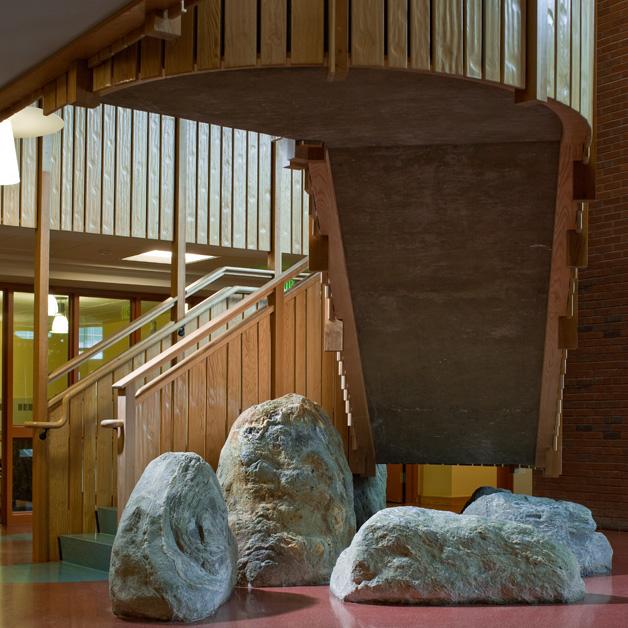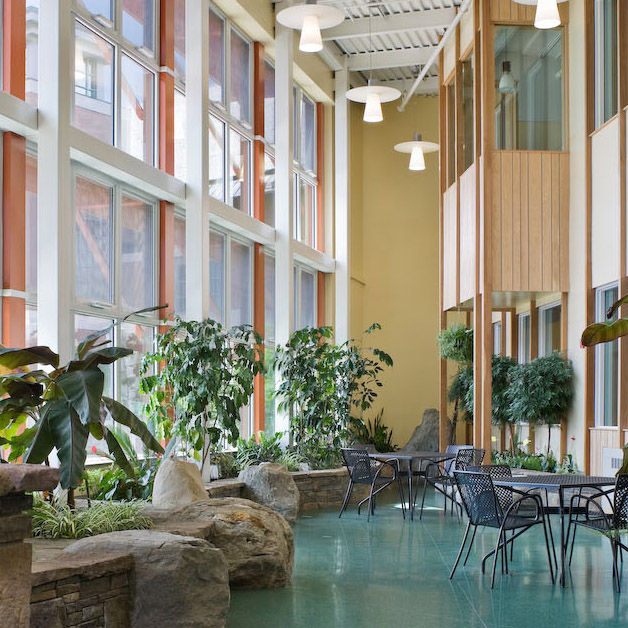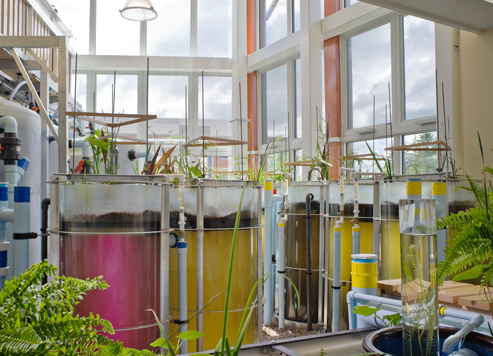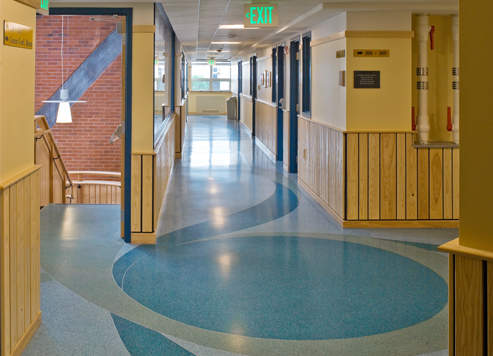The Rubenstein School of Natural Resources was located in a 1980's brick and concrete building with inferior indoor air quality, poor energy performance, no air conditioning, minimal natural ventilation, little daylight, and overcrowding, the antithesis of the school’s mission and philosophy. Maclay Architects won the university’s national design competition, which challenged entrants to solve the building’s problems with a renovation project on a limited budget, while implementing a sustainable vision of national significance and exemplifying a living building.


Maclay Architects led a detailed building science investigation and cost analysis of masonry wall assemblies, including financial analysis of energy options. This research convinced UVM to invest in a near net zero building renovation and addition.
The design incorporated biophilic and biomimicry principles. Maclay Architects created a building that is a teaching tool, a model and beacon for the UVM campus and broader community. The collaborative design process included UVM staff, faculty and students and was rooted in the school’s mission and goals.
The project integrated sustainable design principles, including building envelope enhancement, materials selection, mechanical systems optimization, deferred maintenance improvements and simplified building operation. More specifically, wall insulation levels were increased from R-5 to R-32 and roof insulation from 3” rigid insulation to 9” minimum (R-54). The EUI was reduced from 89 to 33 kBTU/sf-yr even though cooling was added to the energy load. The design connects to nature through a daylit solarium space and maximized daylight throughout the building. This connection is further reinforced by an Eco-Machine, operable windows for natural ventilation, and planters with integrated benches. The rooftop garden for research and demonstration is one of the prominent features of the living laboratory.


The “Greening of Aiken” project was a model deep energy retrofit on the UVM campus. At the time of construction, almost no new college/university buildings had a lower energy utilization index (EUI). The project demonstrated that renovation can outperform new construction within a tight budget.
Providing an increase in functional space with a reduced ecological footprint, the renewed and expanded Aiken Center has delighted and inspired thousands of students and faculty members.
It has created a more sustainable future by setting a very high bar for renovation projects at UVM as well as being the first, and only, LEED Platinum building on the UVM campus.
Burlington, VT
2011
40,000 sf
LEED Platinum
Net Zero Ready
Existing: 89 kBTU/sf-yr (actual)
Renovation: 33 kBTU/sf-yr (modeled)
24 kBTU/sf-yr (modeled w/renewables)
0.051 cfm50/sf
68kW PV System installed offsite
2006 AIA Vermont,
Proposed Project Citation
2013 Efficiency Vermont’s Best of the Best, Major Renovation Merit Award
2012 Award of Merit, High Efficiency Buildings, National Institute of Building Sciences, Sustainable Buildings Industry Council